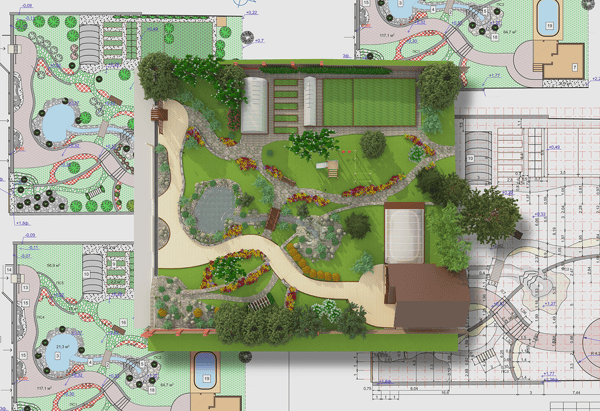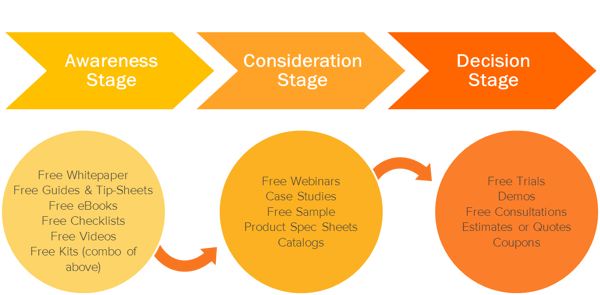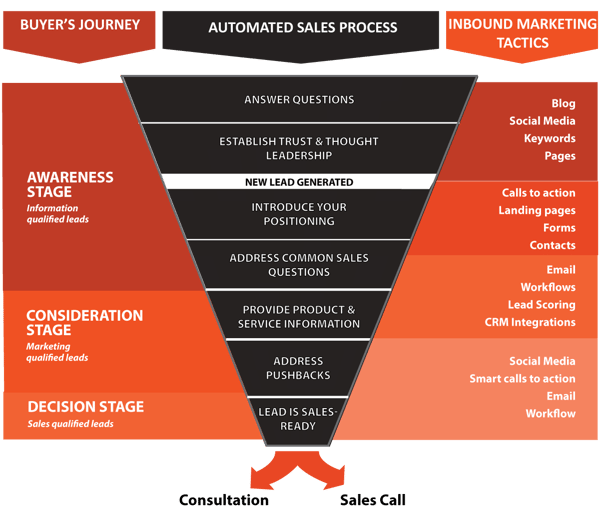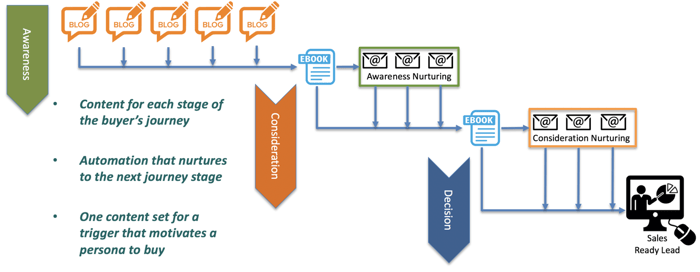Learn More About:
Trade Business Growth
Marketing today occurs at a dizzying pace—so much so, that it can be challenging to determine which strategies, tools, and tactics will actually make an impact. We’re helping you cut through the clutter with this list of high-level essentials you’ll need to succeed in growing your landscaping business with marketing.
This post is intended for landscape business owners who have grown their business organically and through word of mouth but realize they need help getting their business to the next level and must invest in marketing. The steps listed here will help you develop a framework to think about the foundational elements that are needed. Of course there are detailed techniques and methods for those who want to drill further into the details. You will find those suggestions at the end of this article. Lastly, you may find some of these elements foreign to you. If that is the case, do not hesitate to reach out to a marketing agency that can help you succeed.
Ready to jump right in and start marketing your business? Not so fast. Before you do anything else, you must define your brand.
Why is this so important? The key reason is this:
You may be competing for customers with dozens of local landscaping businesses in your area—not to mention national companies that may offer services that overlap with your own. A strong brand will help you stand out.
So what exactly is a brand? It’s not a logo (though we’ll get to that in a minute).
So now we know that establishing your brand is critical. But how do you determine your brand? Here are some questions to ask yourself to help you get started:
Once you have established what your brand is, you can then begin creating your brand identity, which is how you communicate your brand to your customers.
Your brand identity includes assets like your logo and color palette, website design, photography, your content’s voice and tone, and your personality.
For example, let’s say your business focuses on delivering landscaping services for commercial properties. Would your company website feature pictures of residential properties with beautiful lawns and gardens? Of course not—because doing so would be inconsistent with your brand.

Even your employees are a piece of your brand. As an example, think of Southwest Airlines. If you’ve ever flown the airline before, you have undoubtedly encountered a welcoming, friendly, and even funny flight crew.
Southwest Airlines’ mission is “dedication to the highest quality of customer service delivered with a sense of warmth, friendliness, individual pride, and company spirit.” Their employees reflect that mission perfectly.
And if you have a strong brand, you’ll open up a lot of opportunities for your business—in fact, according to data compiled by HubSpot, 90 percent of searchers online haven’t made up their mind about a brand before starting their search.
A successful brand is one that allows customers to instantly “know” you each time they encounter you—and for them to build the perceptions of your business that are most important to you.
We’ve already talked a bit about what your brand position is. Now it’s time to create your brand identity.
Your brand identity is how you communicate what your brand is to your audience. A brand identity is a tangible, visual representation of your brand. Its elements include:
As an example, take a look at the product below. Even if it did not have the product’s name, you instantly know it is a bottle of Coca-Cola.

That’s an example of a strong, consistent brand identity. The Nike swish is another example of an image that represents a brand. Now, we understand that most landscape business owners won't invest the amount needed to create an image like Coke and Nike, but consider the same concepts. By establishing a brand identity with the color of your trucks, the uniforms your team wears, your logo, and more, you reinforce your professionalism and increase the perceived value of the services you deliver.
And really, I cannot emphasize this enough: Seek someone with design expertise to help you develop your visual brand identity.
As an example, take a look at this slideshow on the evolution of the Coke bottle—it’s a process that began 100+ years ago, and even has a patent. That’s a huge investment for something as seemingly simple as packaging (and doesn’t even cover the logo yet!).
Let’s pretend that you’ve recently joined your local Chamber of Commerce. At your first networking event, you’re asked to introduce yourself to the group with the following question: “What does your business do?"
Nothing could be easier, right?
You might be surprised that answering this question can be harder to do than you might think. That’s where the elevator pitch comes in.

The elevator pitch is a clear, succinct overview of your business—so-called because it should be able to be communicated in the length of time of an elevator ride.
To help you craft your elevator pitch, here are some key points to get you started:
To make sure you nail your elevator pitch, don’t just jot it down, but practice it. You can have family, friends, or colleagues serve as a practice audience (they can especially be helpful in identifying any gaps in or confusing parts of your pitch), or even record yourself until you’re confident both the message and delivery are exactly how you envision them to be.
Now that you’ve established the high-level essentials of your business’s brand, brand identity, and elevator pitch, it’s time for the next step: Establishing your marketing budget.
It’s crucial that you have your marketing budget in place before implementing any individual marketing tactics. Without a budget, you won’t be effectively allocate your marketing dollars to where they can make the biggest impact—or even determine the true ROI of your marketing efforts.
Many factors go into determining your marketing budget. Questions you can ask to help you develop your marketing budget include:
Once you know who you are, how you communicate that, and the financial resources you have available, it’s time to take a look at the specific strategies, tools, and tactics you can use to market your landscaping business.
One of the best methodologies available to promote your business is called inbound marketing.
Inbound marketing is a methodology that engages your ideal customer at each stage of the process they embark upon to purchase the right products or services for their needs (known as a buyer’s journey). It brings your potential customers directly to you, rather than you going to them—and even better, they’re the customers most likely to purchase from you in the first place.

Using an inbound marketing strategy, you create customized, targeted content for your ideal customer that meets their precise needs at each stage of the buyer’s journey
Inbound marketing content should be highly relevant, genuinely helpful, and valuable—so valuable, in fact, that your prospective customers are willing to give you their contact information so they can hear even more from you directly. It’s an action that says, “I trust you as an authority on this subject.”
Once you have a customer’s contact information, you can move them into an inbound sales funnel, through which you can nurture your prospective customer through the buyer’s journey.

The content you should create for your sales funnel should help your customers identify their problem, consider available solutions, answer their questions, and address their objections.
The goal is that, by the time they reach the end of the process, they should be primed so thoroughly that converting to a sale by purchasing your products or services is simply the clear and only logical next step.

Marketing automation is the linchpin of any inbound marketing strategy—you simply can’t do it without one.
So what is marketing automation, exactly?
Marketing automation uses technology to perform certain marketing activities automatically. It ensures that your business can generate highly targeted leads 24/7, 365 days a year—long beyond your initial financial and time investment. It enables you to automate all of the elements of digital marketing; email marketing, social media, website hosting, website forms, landing pages, live chat, chatbots, popup forms, SEO, analytics and more.
This diagram shows how you might use marketing automation to share information at each stage of their journey for information and automatically nurture contacts to the next stage until they are ready to speak to your sales person. It's a real time saver and it lets you respond instantly to prospects.

For a practical example of marketing automation at work, let’s say you offer your prospective customers a free ebook if they share their email address with you. When a customer submits their contact information in exchange for the ebook, you can be sure they want it at the exact moment they request it—even if it’s at midnight on a Saturday.
In addition, marketing automation doesn’t benefit just the customer. Marketing automation will help you streamline your marketing activities behind the scenes of your business, freeing up both time and resources.
For a marketing automation tool, we recommend HubSpot.
Before starting any marketing plan for your landscaping business, you want to make sure your foundation is strong—and this list of marketing essentials is a great place to start. Once you've put them into practice, you'll be well on your way to an efficient, effective, and sound marketing strategy that makes your business stand out from competitors.
Are you ready to start putting these essentials into practice in your own landscaping business? We'll help you learn how to grow sales, even out the seasonal ups and downs of a landscape business, and grow strategically. Request a call to learn more.
Ask us about our unique approach that creates a full-funnel "inbound" engagement model for your business that attracts and converts digitally engaged prospects.